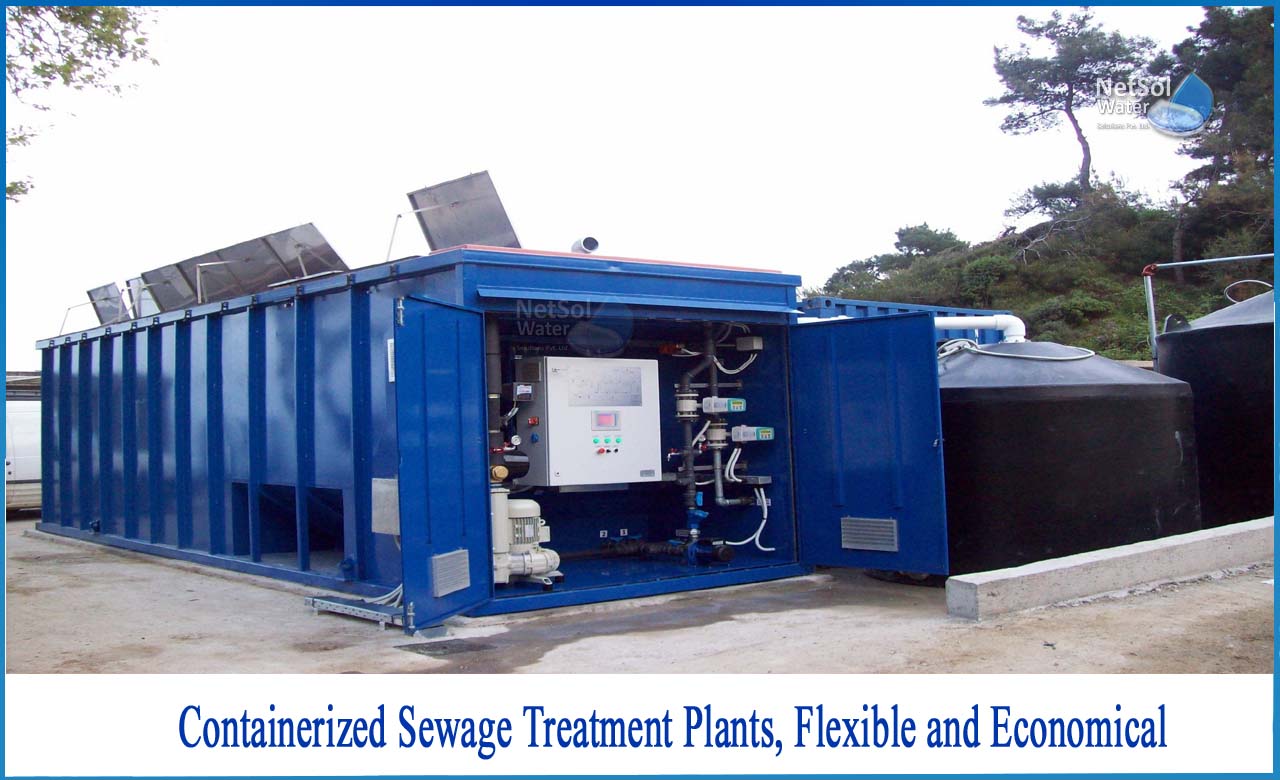What is Containerized Sewage Treatment Plants?
Setting up a large-scale sewage treatment facility on a transitory industrial location is impractical. You will waste both money and time. In instances like these, containerized sewage treatment systems that can be easily transferred and erected are the ideal solutions.
Waste water treatment equipment will be pre-installed in containerized sewage treatment plants.
There are several advantages to growing plants in containers-
1: Reduced operational time and expense
Setting up containerized sewage treatment programs does not require months or years; it may be done in a couple of days. These are also very cost effective.
2: Provides security
Because the plant is contained within the container, adverse weather conditions will have no effect on it.
3: Extreme mobility
Containerized sewage treatment facilities may be transportable to any area in the globe; they can be reused and relocated to a new site as needed. Because of this property, it is a convenient treatment approach.
4: Variety of setups
There are configurations for both small and big applications. Single containerized systems are available for smaller applications, while modular containerized wastewater treatment solutions comprised of many containers are available for larger applications.
5: Fast installation
The water or wastewater treatment system will be factory fitted and tested. It will be a 'plug and play' installation that will take less time.
Containerized sewage treatment systems are widely employed in the following areas/industries:
- Mobile worker camps
- Construction sites
- Temporary industrial locations
- Sites with limited space
- Permanent and temporary municipal wastewater treatment
- Refugee settlements
- Military Bases
- Offshore infrastructure
Sedimentation, flotation, conventional filtration, reverse osmosis filtration, biological treatment, nutrient removal, and resource recovery are among activities that containerized wastewater treatment facilities may perform. They are environmentally benign and can supply water demand in isolated regions.
Containerized wastewater treatment facilities provide more automation, dependability, and uniformity, making them ideal for distant areas. These treatment plants are often designed to the customer's specifications.
Containerized units are extremely adaptable and offer a quick and painless approach.
Capacities and approvals for containerized STPs:
- 10- 20ft. container for organic load
- Daily quantity: up to 10,000m3 waste water per day
- Up to 30,000 PE of parallel capacity
- Temperature range: -15 to 50 degrees Celsius
- COD range: 100-50,000 mg/l
- Consistent approvals
How do Containerized STPs treat Wastewater?
We preinstall all treatment modules (processes) within a single container for small scale commercial wastewater treatment applications. Within the container, the whole treatment process, including primary settling, secondary treatment, and clarifying, takes place. This sort of packed plant is suited for transportable and temporary sewage treatment. The treatment modules for large-scale wastewater treatment applications will be determined by the influent and effluent needs and characteristics.
A: Mechanical pre-treatment (removal) of inorganic coarse materials and solids using a sieve screw built into or on top of the container is referred to as primary treatment/screening. We install small grease separation and sand removal equipment. The eliminated waste elements are collected in holding tanks for separate disposal.In smaller systems, initial treatment can be incorporated by settling in a pre-treatment tank. The main sludge is sent to a sludge treatment facility.
B: Biological treatment occurs when microorganisms in wastewater transform dissolved pollutants into sludge and gases. SBR system or a fixed bed cascade can be used in the biological treatment process. The sort of biological treatment used is determined by the type and concentration of the wastewater. The biological treatment process, as well as all essential controls, are completely integrated within the container.
C: Clarification of effluent is accomplished by the employment of lamella separators integrated into containers, which provide high flow capacity final clarification before to release.
D: Tertiary treatment is used when discharge limitations are strict and tertiary treatment modules, such as Reverse Osmosis, chemical dosing, phosphorus reduction, and disinfection, must be included into the treatment process. There are several possibilities for tertiary treatment, like as chlorination, ozonation, or UV irradiation for disinfection.
How can Netsol Water help?
Netsol Water is a significant water and wastewater treatment firm in India, offering WTP, WWTP, STP, ETP, RO Plant manufacture, among other services. We also manufacture Compact and containerized WWTPs for several applications. The company creates equipment’s and is committed to providing practical solutions that help businesses flourish. We are committed to providing our valued customers with hands-on service, expert counselling, and training.
Netsol Water is Greater Noida-based leading water & wastewater treatment plant manufacturer. We are industry's most demanding company based on client review and work quality. We are known as best commercial RO plant manufacturers, industrial RO plant manufacturer, sewage treatment plant manufacturer, Water Softener Plant Manufacturers and effluent treatment plant manufacturers. Apart from this 24x7 customer support is our USP. Call on +91-9650608473, or write us at enquiry@netsolwater.com for any support, inquiry or product-purchase related query.



